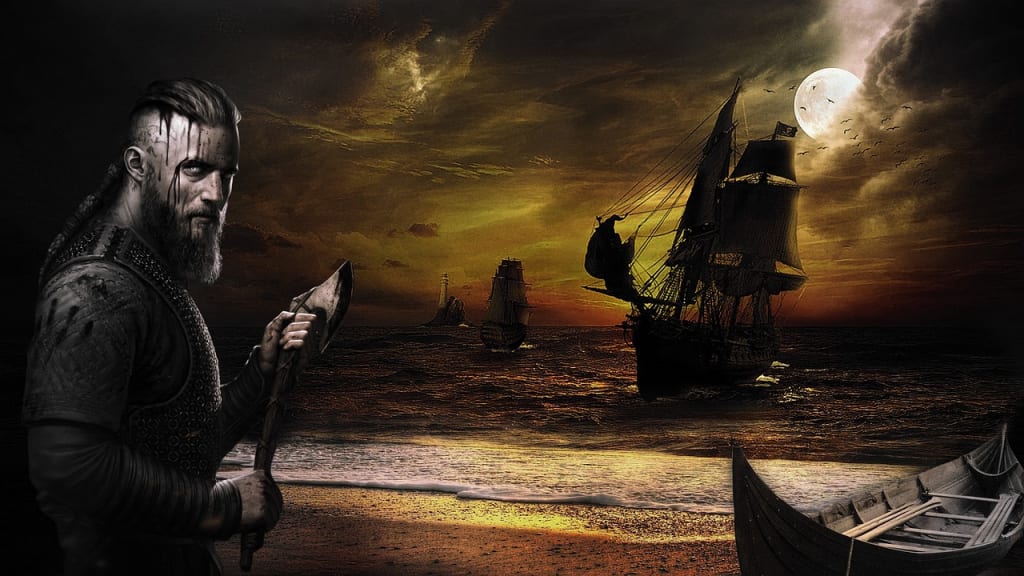Viking Raids Iberian Peninsula
Viking Raids Iberian Peninsula

In the year 859, a significant turning point occurred in the history of Western Europe as a new era of darkness engulfed the region. The arrival of Arab pirates from the south, Magyar horse riders from the east, and ambitious Scandinavians navigating the seas and river systems added to the prevailing chaos. Amidst this tumultuous period, a handful of Viking expeditions directed their attention towards the prosperous yet vulnerable Anglo-Saxon kingdoms. However, the situation in modern-day Spain presented a contrasting scenario. The Emirate of Cordoba, governed by exiled remnants of a once mighty dynasty, possessed a well-trained and disciplined army, in stark contrast to the fragmented systems in Frankia and Britain.
Intermittently, bands of Norsemen, referred to as "Madjus" or fire-worshippers, embarked on sporadic incursions into the Iberian Peninsula, surveying the terrain for prospective larger ventures. Despite the preparedness of Christian realms such as Asturias, Galicia, and Navarre, the Vikings perceived Iberia as a lucrative objective owing to its integration into the extensive Mediterranean trade network of the Islamic realm.
In the year 844, an impressive fleet of Viking ships, numbering over a hundred, boldly sailed along the Atlantic coast. Their unexpected assault targeted the Christian kingdoms and the Emirate of Cordoba, leaving a trail of devastation in their wake. The pinnacle of their expedition was the fierce battle fought for the city of Seville, which inflicted greater harm upon Al-Andalus than a hundred years of warfare with the Christian kingdoms. Those who survived this perilous journey returned with captivating stories of the region's riches, paving the way for forthcoming Viking invasions.
During the early summer of 859, a formidable fleet of Vikings embarked on a grand expedition from their strongholds along the Loire Valley. This ambitious endeavor, known as a "remarkable maritime journey," had a dual purpose: to plunder the Iberian Peninsula and venture into the Mediterranean, a region that had been inaccessible to Scandinavians until then. Under the leadership of esteemed commanders, Hostin and Bjorn Ironside, the Vikings aimed to pillage the city of Rome, which, although diminished, remained a significant spiritual hub.
During the following three years, the Viking armada pillaged the coastlines of the southern ocean, establishing themselves as some of the earliest Scandinavians to plunder the incredibly prosperous Al-Andalus region. This daring expedition, surpassing the 844 raid in scope, set its sights on mainland Europe, the Atlantic shores, and ultimately reached the waters of Andalusia.
Al-Andalus proved to be a challenging adversary for the Vikings, however, Emir Abdul Rahman effectively protected his kingdom with his well-equipped army and the utilization of advanced weaponry such as Greek fire. Despite causing chaos along the coastline, the Viking fleet ultimately suffered defeat against the Andalusian forces. Those who managed to survive either escaped or were taken captive, signifying the conclusion of this daring expedition.
In the wake of the unsuccessful raid, the Emir took decisive action to fortify coastal defenses, constructing a formidable fleet of powerful warships and setting up vigilant lookout posts. Despite these measures, Viking assaults persisted, and subsequent expeditions, albeit on a smaller scale, remained focused on the Christian realms of the northern lands. The remarkable achievements of renowned figures such as Hostin and Bjorn Ironside attained mythical status, profoundly influencing the historical portrayal of Vikings.
The Viking incursions into the Iberian Peninsula during the years 844 and 859 were bold endeavors that had a profound influence on the history of the region. These ventures demonstrated the Vikings' insatiable desire for riches, fame, and excitement. Despite encountering formidable resistance in Al-Andalus, the repercussions of these raids echoed through the stories of renowned commanders, adding to the intricate narrative of Viking history in medieval Europe.
About the Creator
Johnny Six
I'm a devoted stay-at-home mom, passionate about alternative education and homeschooling. My daughter is my focus, and together, we explore various hobbies,cooking, art, nature, reading, and music. https://helsprintsandthings.etsy.com






Comments
There are no comments for this story
Be the first to respond and start the conversation.